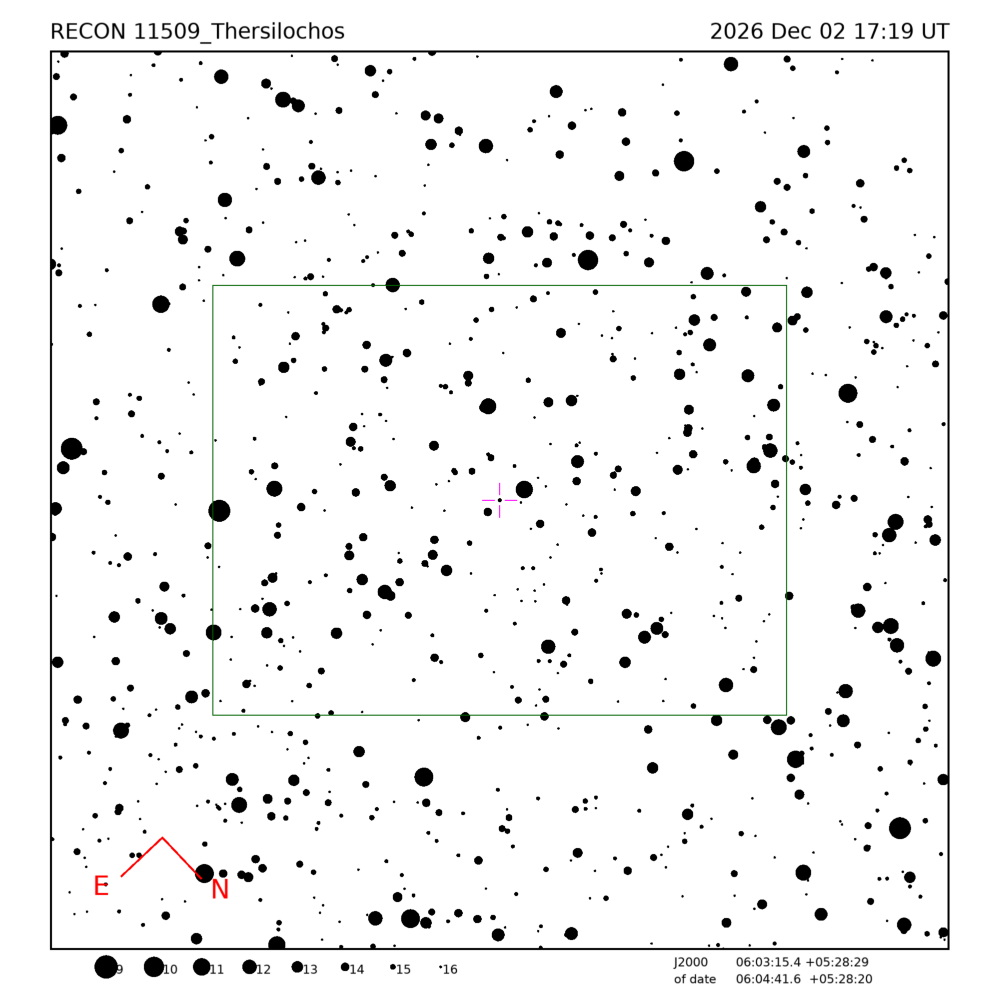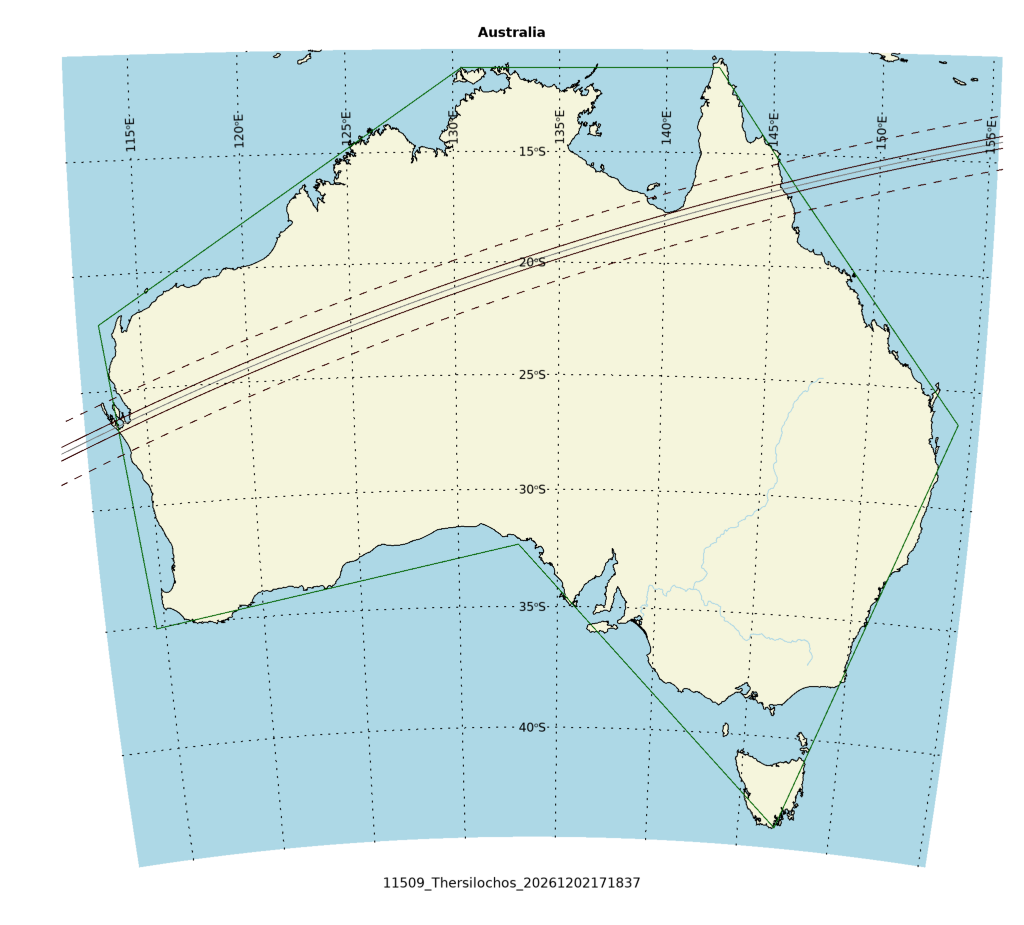
Occultation event with (11509) Thersilochos, event index number 4995
Regions able to see the event: Australia
Geocentric closest approach at 2026/12/02 17:18:37 UTC
J2000 position of star is 06:03:15.4 +05:28:29
Equinox of date position of star is 06:04:41.6 +05:28:20
Star is 87 degrees from the moon. Moon is 35% illuminated.
Stellar brightness G=16.2, apparent brightess of occulting body is G=15.2
Use an exposure time of 0.80 seconds with the standard RECON-QHY system.
SNR of 3.1 per integration for unocculted signal
Expected flux drop is 29% with SNR of 0.9 for the occulted depth (per occulted point)
Apparent velocity is 16.8 km/sec on the sky relative to the star, or, 19.1 arcsec/hr.
Position angle of asteroid motion is 71.9 degrees
The recommended exposure time corresponds to 13.4 km per image.
The 1-sigma error in the time of the event is 0.2 seconds.
The 1-sigma cross-track error in the shadow position is 29.5 km.
The sky-plane scale is 3161.8 km/arcsec.
Diameter estimates:
55.0 km assuming a 5% albedo, maximum of 3.3 sec for a central chord
22.4 km assuming a 30% albedo, maximum of 1.3 sec for a central chord
Cross-track diameter of 50.0 km used for deployment plan.
Star training set for 11509_Thersilochos, (2026/12/02 17:19UT) Object RA Dec mag sep mel Betelgeuse 05:56:37.8 +07:24:35 0.4 2.79 89 Bellatrix 05:26:34.6 +06:22:18 1.6 9.52 96 63 Ori 06:06:24.3 +05:24:58 6.4 0.43 86 PPM 149820 06:04:33.8 +05:43:33 9.4 0.26 87 11509_Thersilo 06:04:41.6 +05:28:20 15.2 87 Positions are for equinox of date


Star training set for 11509_Thersilochos, (2026/12/02 17:19UT) Object RA Dec mag sep mel Betelgeuse 05:55:10.3 +07:24:26 0.4 2.79 89 Bellatrix 05:25:07.8 +06:20:58 1.6 9.52 96 63 Ori 06:04:58.1 +05:25:12 6.4 0.43 86 PPM 149820 06:03:07.5 +05:43:42 9.4 0.26 87 11509_Thersilo 06:03:15.4 +05:28:29 15.2 87 Positions are for J2000